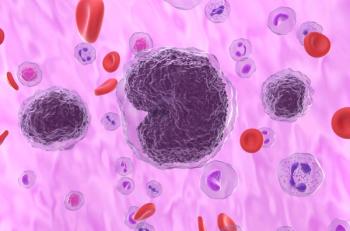
People Living With HIV Face Higher Risk of CVD, Barriers to Accessing Care
People living with HIV are generally at 1.5- to 2-fold higher risk for cardiovascular diseases (CVDs), including heart attacks, strokes, and heart failure, and they often face barriers to accessing care.
The advent and uptake of antiretroviral therapy has transformed HIV into a chronic, manageable disease with lifespans comparable to those seen in people without HIV. However, this has also led to more comorbidities among an aging HIV population, and people living with HIV (PLWH) are generally at 1.5- to 2-fold higher risk for cardiovascular diseases (CVDs), including heart attacks, strokes, and
According to a scientific statement from the American Heart Association published in Circulation, the global burden of HIV-associated CVD has tripled over the past 2 decades and accounted for 2.6 million disability-adjusted life-years per year. The increased risk is likely attributable to the interactions between traditional risk factors, such as diet and tobacco use, and HIV-specific risk factors, such as compromised immune systems and inflammation.
“Considerable gaps exist in our knowledge about HIV-associated diseases of the heart and blood vessels, in part because HIV’s transition from a fatal disease to a chronic condition is relatively recent, so long-term data on heart disease risks are limited,” Matthew J. Feinstein, MD, MSc, assistant professor of Medicine and Preventive Medicine at the Feinberg School of Medicine, Northwestern University, and chair of the writing group for the statement, said
Another contributing factor to this increased risk is that PLWH often face barriers to accessing care, according to the statement. PLWH have fewer clinics that meet guideline directed medical therapy for aspirin therapy (5.1% vs 13.8%) and use of statins (23.6% vs 35.8%).
Different factors affecting access include education level,
PLWH also face psychological challenges, including internalized and anticipated stigma,
“Given the psychological, socioeconomic, and geographic factors that make PLWH particularly vulnerable to the onset and progression of CVD, there is considerable room for improvements in CVD prevention and treatment,” wrote the authors of the statement. “The investment in HIV care and research over the years has resulted in a growing infrastructure and strategies that can be leveraged for optimal CVD prevention and management.”
The answer is 2-fold, according to the authors: targeted attention and reimbursement. In addition to healthcare providers being unable to dedicate the time needed to understand challenges facing the aging HIV population, PLWH who also have CVD need longer visits, care coordination, and multidisciplinary team engagement. At the same time, there are shortcomings in the US healthcare reimbursement system.
One possible solution put forward by the authors is the integration of cardiovascular preventive and therapeutic care for PLWH. This could include improving health insurance access to specialists, strengthening specialist referral pathways, nurse management, clinical pharmacist engagement, team-based approaches to targeting high-risk patients, and collocated clinics.
In an accompanying patient perspective, Jules Levin, founder and executive director of the National AIDS Treatment Advocacy Project, who has been living with HIV for 35 years, wrote, "Ultimately, if we are to curb the oncoming epidemic of HIV and aging, we will need better awareness and more patient-focused research and care efforts. We owe better to the aging population of PLWH, without those years of advocacy and engagement in research and care we would undoubtedly be in a worse position than we are today.”
Reference
Feinstein M, Hsue P, Benjamin L, et al. Characteristics, prevention, and management of cardiovascular disease in people living with HIV: A scientific statement from the American Heart Association [published online June 3, 2019]. Circulation. doi: 10.1161/CIR.0000000000000695.
Newsletter
Stay ahead of policy, cost, and value—subscribe to AJMC for expert insights at the intersection of clinical care and health economics.













































